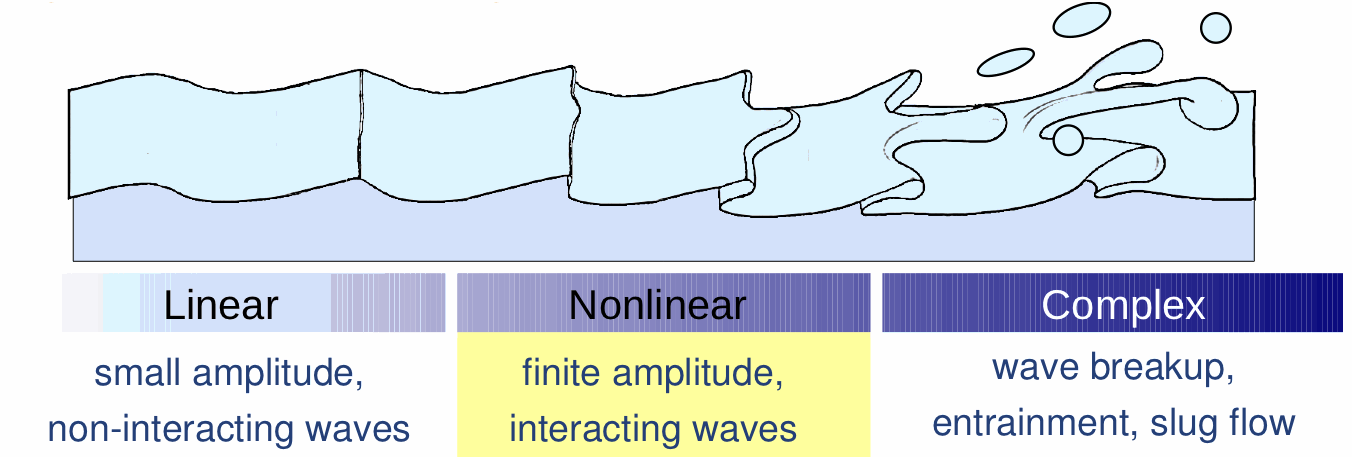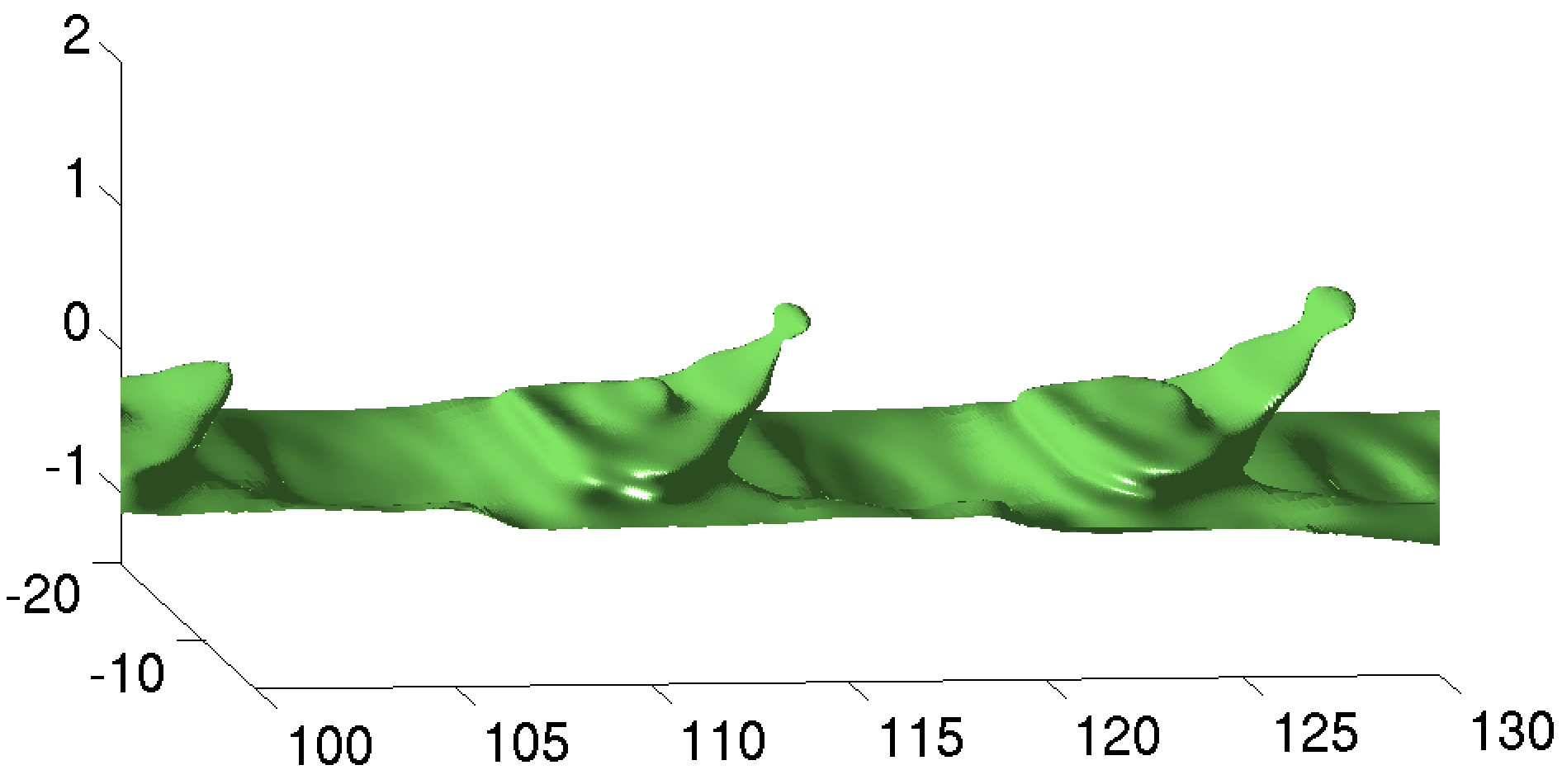The mechanics of two-fluid shear flows are significant in many engineering and environmental applications. For example, the instability of two-fluid flows affects the aerodynamic lift of airfoils in the presence of deicing agents, the primary breakdown in spray combustion, the formation of sea sprays, and the heat transfer rates of annular film flows in nuclear installations. This project focuses on semi-bounded two-fluid flows, or boundary layers. However, the theoretical and computational techniques developed as part of this program can be extended to unbounded flows such as mixing layers and jets.
In boundary layers, the presence of a different density and viscosity film near the wall alters the stability characteristics of the flow. The particular effect is dependent on the viscosity and density ratios between the wall-film and the outer fluid, as well as surface tension. Despite the presence of an additional instability due to the viscosity mismatch, a lower viscosity film for instance can enhance shear-sheltering, the mechanism which shields the boundary layer from free-stream vortical disturbances, and hence delay breakdown.
The objective of this research is to investigate the ability of an underlying film to delay or suppress the onset of boundary layer instabilities, which would otherwise take place in a single-fluid flow. Our methodology makes use of direct numerical simulations (DNS). The flow is subjected to free-stream turbulence, similar to what is observed in engineering and environmental flows. This interaction causes a laminar boundary layer to breakdown to a chaotic, or turbulent state. The DNS provides a numerical laboratory where the full non-linear breakdown process from laminar to turbulence is simulated, and the role of the underlying film is quantified. The figure below shows the near-wall film, coloured by v-velocity perturbation. The blue regions show depletion of the film, and the grey and red iso-surfaces show the turbulent velocity fluctuations, which mark boundary layer breakdown.
Non-linear stability theory for interfacial waves
In many important engineering applications, such as in wind-generated waves or transport of gas-liquid mixture, the motion of the two different fluids gives rise to interfacial waves which can propagate through the system. These waves can be responsible for undesirable effects, for example pressure losses in pipelines. To study how these waves behave, we have developed new theoretical and computational models of two-fluid shear flows. These models are based on the nonlinear Parabolized Stability Equations (PSE), using either a novel coordinate transformation or an interface capturing scheme to track complex deformations of the fluid interface.

The simulations that we have conducted have shown this method to be as accurate as direct calculations of the governing Navier-Stokes equations, but much more efficient. While typical simulations of two-fluid mixing layers require several hundred to thousands of CPU-hours using direct calculations, the new PSE formulation requires an order of magnitude less. A comparison of the Interface-Capturing PSE (IC-PSE at left) and DNS (at right) is shown below.
Our research has also advanced our understanding of how interfacial waves can grow and behave, especially in the nonlinear regime. In this regime, waves which were previously sinusoidally-shaped develop crests and form vortex rolls, with portions of these waves becoming stretched to form thin filaments or “fingers” of fluid, as shown in the figure below of a three-dimensional perturbation in two-phase mixing layer. Using the nonlinear PSE, we are able to delineate the role of nonlinear mechanisms in this process, examining how nonlinear interactions and energy transfer between different modes occur, and how coherent flow structures start to develop. These nonlinear mechanisms were neglected in many previous linear studies, but are instrumental in our investigation of several multiphase flows, including two-phase mixing layers, boundary layers, and jets.

The broad applicability of this research work can lead to substantial benefits for a variety of industries and technologies. For instance, oil and nuclear energy companies will benefit from a better understanding of interfacial disturbances in two-phase pipe flows, leading to more efficient power plant and pipeline operations. Gas turbine and engine manufacturers will also benefit from more efficient simulations of liquid jets and the atomization process, eventually leading to better engine performance.
